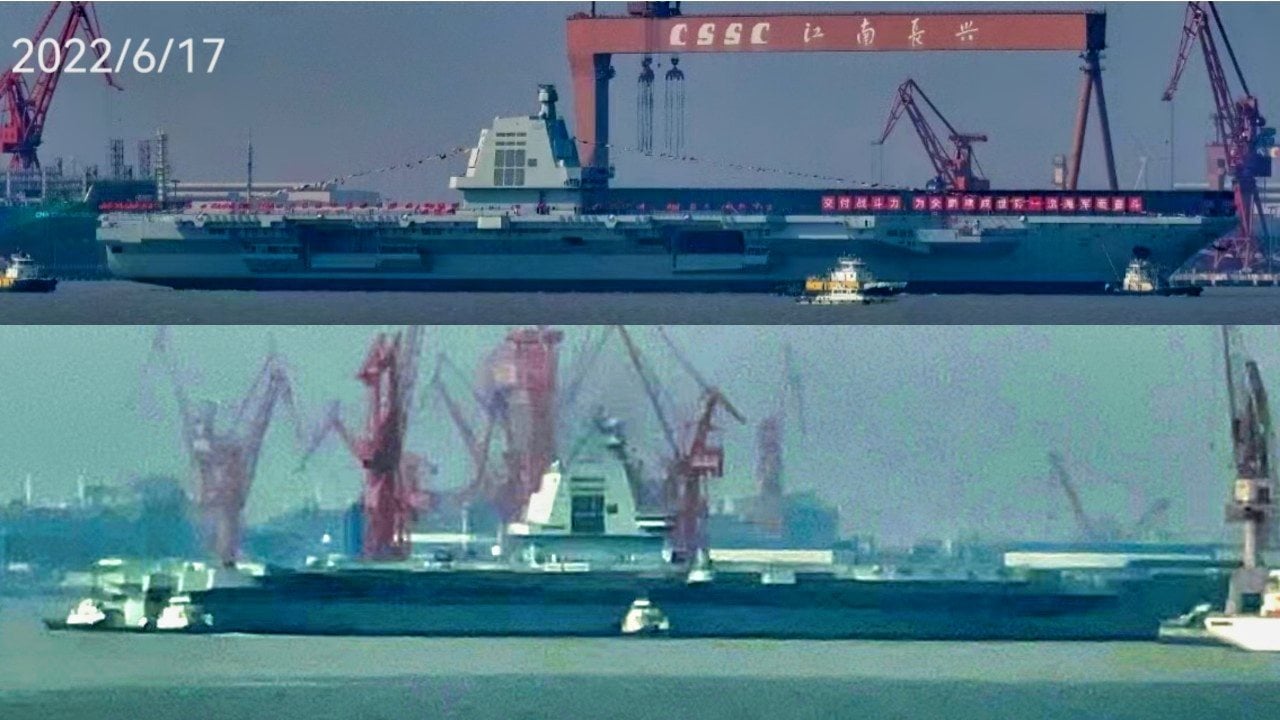U.S. Navy vs. China: Who Has the Military Advantage Now?

Summary and Key Points: After decades of counterterrorism operations, the U.S. military is pivoting to focus on naval and air capabilities in anticipation of a potential large-scale conflict with China in the Indo-Pacific.

-China’s navy, the largest in the world, boasts over 700 vessels, including missile boats, destroyers, submarines, and aircraft carriers.
-Although the quality and combat experience of Chinese crews lag behind their American counterparts, China's numerical advantage and proximity to key regions like Taiwan and the South China Sea provide significant strategic benefits.
China's Rising Naval Might Is a Problem
After decades of fighting terrorists and insurgents in the Middle East, the U.S. military is pivoting to naval and air operations.
The possibility of a large-scale conflict with China in the vast Indo-Pacific area of operations necessitates a strong naval and air capability. It is also crucial to understand the potential adversary and his capabilities.
When it comes to naval power, China’s sheer numbers lead the way.
The Chinese Navy
Beijing fields the largest naval force in the world. It has more than 700 surface combatants, submarines, and support vessels.
The quality of the ships and the capabilities of the crews certainly fall short of the standard set by the U.S. Navy. For example, the Chinese Navy only has three aircraft carriers – the third is still undergoing sea trials – with two of them being much smaller than American fleet carriers.
Chinese crews don’t have any combat experience, whereas American crews have been engaged in sustained combat operations or contingencies for the better part of two decades.
Nevertheless, China does have the larger fleet.
The Chinese Navy fields 109 missile boats, 72 corvettes, 49 destroyers, 42 frigates, 36 minesweepers, 26 anti-submarine ships, 16 gunboats, and the three aircraft carriers. The Chinese Navy also has a potent amphibious warfare capability evidenced in its 72 landing ships – which can accommodate armored vehicles and infantry – eight amphibious transport docks, and three landing helicopter docks. These vessels are geared specifically for amphibious operations such as an invasion of neighboring Taiwan.
As far as underwater capabilities, the Chinese Navy fields approximately 61 submarines, including diesel-powered electric attack subs, nuclear attack subs, and nuclear ballistic missile submarines that can carry nuclear warheads.
Finally, the Chinese Navy relies on an extensive fleet of support ships, including 16 replenishment oilers for refueling warships underway, over 230 auxiliary ships, and hundreds of other smaller ships that could support combat operations if necessary.
Home Field Advantage for China
Beside having the larger fleet, the Chinese Navy has the advantage of operating closer to its home ports. Taiwan and the South China Sea are directly off China’s coast. In a contingency, Chinese warships would be able to deploy quickly, as well as have shorter resupply times.
In comparison, U.S. Navy surface combatants and submarines will need days before they can reach the battlespace in force. A nuclear submarine needs about five to seven days to sail from Australia to the Western Indo-Pacific, eight to nine days to sail from Hawaii, and as much as two weeks to travel from the West Coast.
Chinese military strategists understand this. They very likely plan for a heavy assault early on to secure the air and naval battlespace before significant U.S. and allied reinforcements arrive.
In a potential conflict, all will depend on air and naval forces rotating into the area, and how long they can hold until reinforcements arrive.
About the Author:
Stavros Atlamazoglou is a seasoned defense journalist specializing in special operations and a Hellenic Army veteran (national service with the 575th Marine Battalion and Army HQ). He holds a BA from the Johns Hopkins University and an MA from the Johns Hopkins’ School of Advanced International Studies (SAIS). His work has been featured in Business Insider, Sandboxx, and SOFREP.
Image Credit: Creative Commons and/or Shutterstock.
